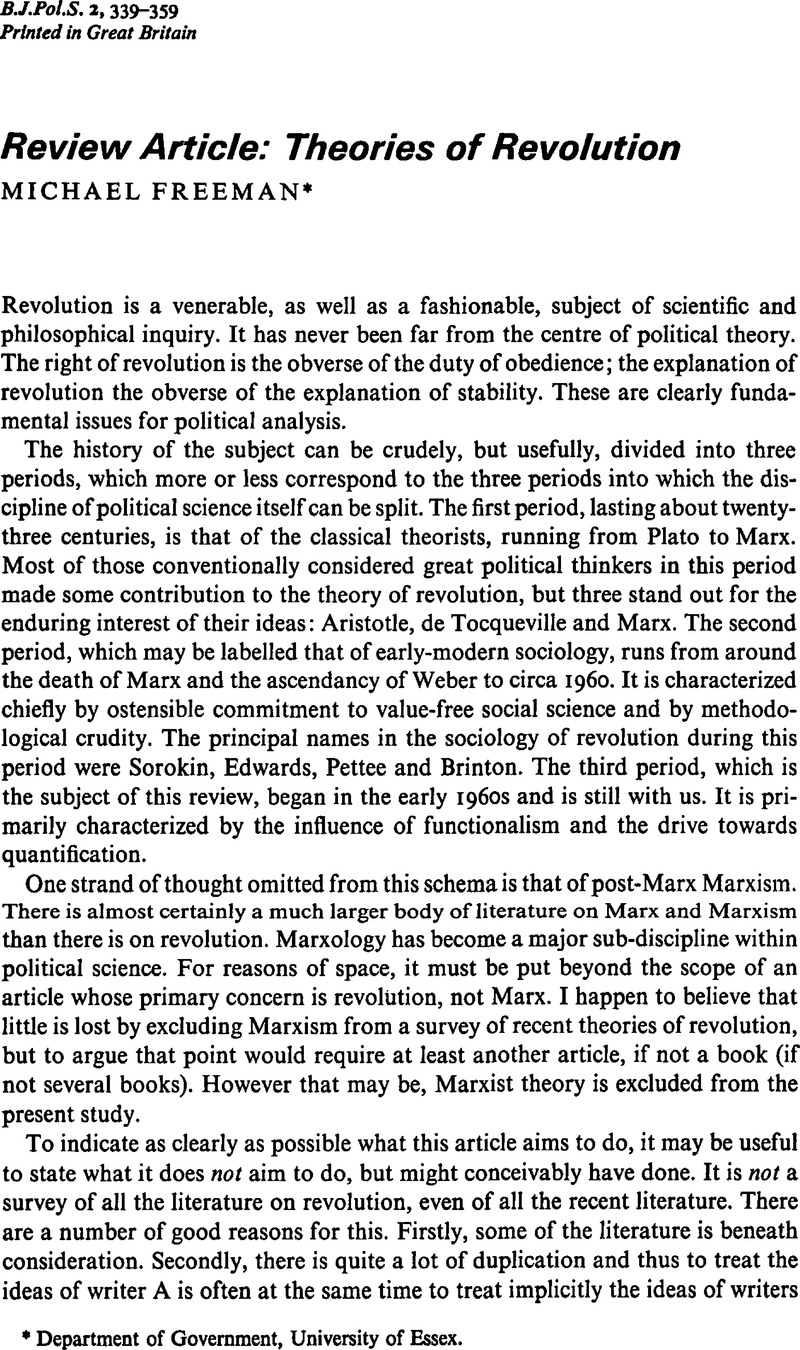Published online by Cambridge University Press: 27 January 2009

1 Smelser, Neil J., Theory of Collective Behavior (London: Routledge and Kegan Paul, 1962).Google Scholar
2 Johnson, Chalmers, Revolutionary Change (London: University of London Press, 1968Google Scholar; first published by Little, Brown and Company, 1966).
3 Gurr, Ted Robert, Why Men Rebel (Princeton: Princeton University Press, 1970).Google Scholar
4 All references to page numbers in this section of the text refer to Smelser, Collective Behavior.
5 All references to page numbers in this section of the text refer to Johnson, Revolutionary Change.
6 All references to page numbers in this section of the text refer to Gurr, Why Men Rebel.
7 Parsons, Talcott, The Social System (London: Routledge and Kegan Paul, 1951), pp. 520–33.Google Scholar
8 Brinton, Crane, The Anatomy of Revolution (New York: Vintage Books, 1965, revised and expanded edition; first published in 1938).Google Scholar
9 See, for example, Olson, Mancur Jr, The Logic of Collective Action (New York: Schocken Books, 1968).Google Scholar
10 I should like to acknowledge my debt to those students at the University of Essex with whom I have studied the theory of revolution and whose ideas have greatly stimulated my own. I should like particularly to mention a paper written by Peter Morriss on Gurr, which crystallized my view that what was most troubling about such works as those reviewed here was their vacuity. This paper may be said to have stood as a precipitating factor for the present article, in that it was an event, creating, sharpening or exaggerating a condition of strain I had experienced in studying these books. It was also something of an accelerator in that it led me to believe that the forces of the authorities could be overcome. It was, however, not contributed by Fortune, but, as I have said, by Mr Morriss.